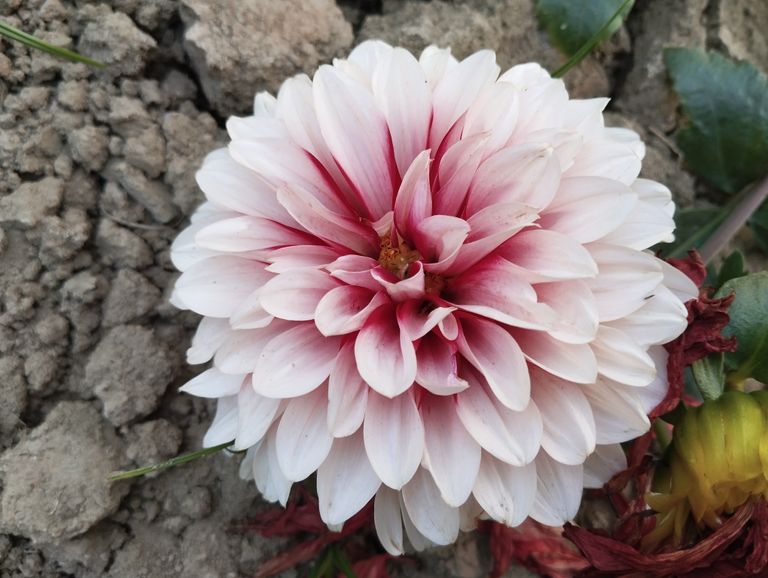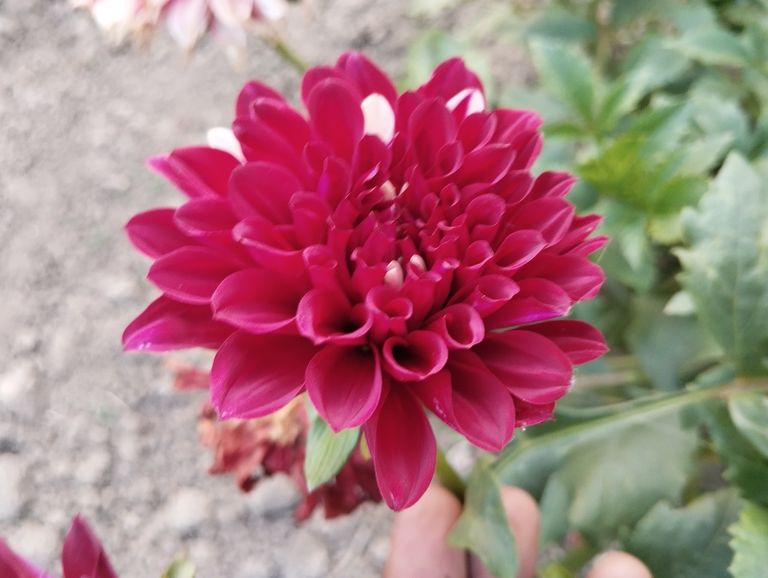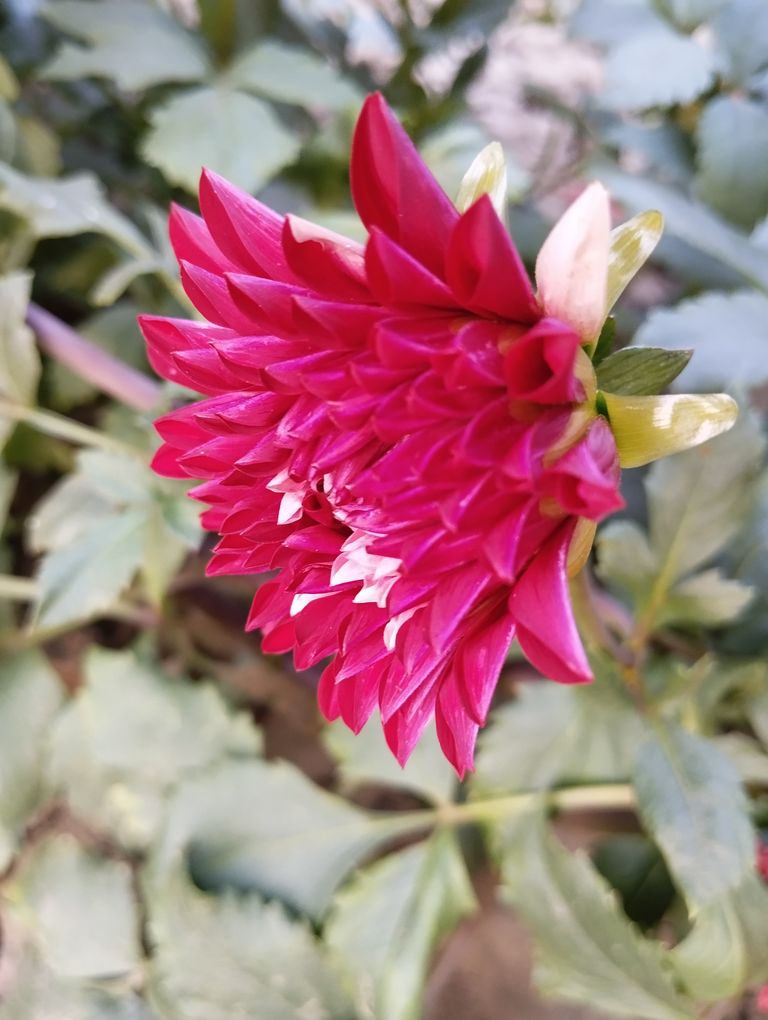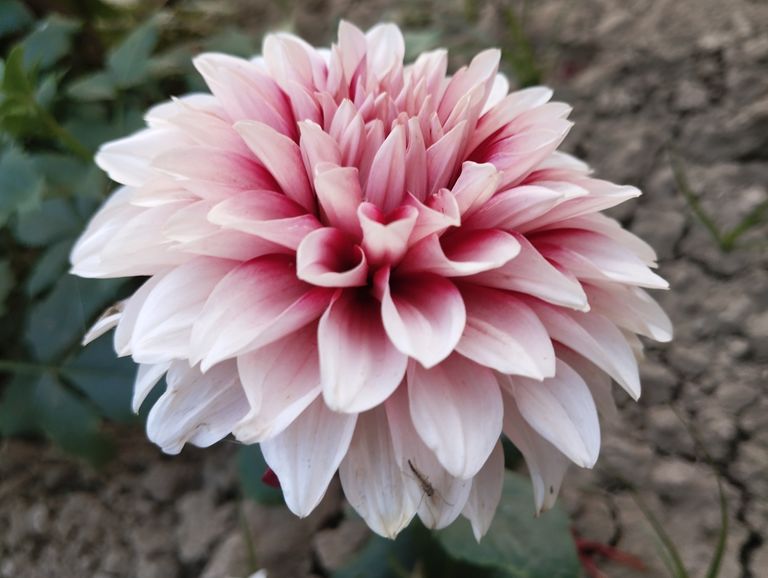
Dahlia Flower Benefits, Uses, and Symbolism.
Dahlia flowers are among the most vibrant and diverse blooms found in gardens worldwide. Native to Mexico and Central America, these stunning flowers come in a variety of shapes, sizes, and colors, making them a favorite among gardeners and floral enthusiasts. While dahlias are primarily appreciated for their beauty, they also offer numerous benefits, both practical and symbolic. This article explores the many advantages of dahlias, their uses, and their cultural significance.
- Introduction to Dahlia Flowers
Dahlias belong to the Asteraceae family, which includes sunflowers and daisies. They are perennial plants with tuberous roots and are known for their long-lasting blooms, which appear from midsummer to late autumn. The flower’s striking appearance has made it a symbol of elegance, inner strength, and creativity.
1.1 Origin and History
Dahlias were first discovered in the mountainous regions of Mexico and Guatemala. The Aztecs used these flowers for food and medicinal purposes. In the late 18th century, Spanish explorers introduced dahlias to Europe, where they quickly gained popularity due to their exotic beauty and easy cultivation. Today, dahlias are cultivated worldwide and are celebrated in various festivals, especially in Mexico, where they are the national flower.
- Health and Medicinal Benefits of Dahlia Flowers
Though dahlias are not as commonly used in modern medicine as some other plants, they have several health benefits that have been recognized for centuries.
2.1 Rich in Inulin
Dahlia tubers contain inulin, a type of dietary fiber that promotes gut health. Inulin acts as a prebiotic, feeding beneficial bacteria in the digestive system. This can help improve digestion, regulate blood sugar levels, and support overall gut health.
2.2 Antioxidant Properties
Dahlia flowers contain antioxidants that help fight free radicals in the body. Free radicals contribute to aging, inflammation, and chronic diseases. The presence of antioxidants in dahlia petals and tubers may help protect the body against oxidative stress.
2.3 Anti-Inflammatory Benefits
Traditional medicine practitioners have used dahlias to treat skin irritations and inflammations. Extracts from dahlia petals may help reduce redness, swelling, and irritation when applied to the skin.
2.4 Diabetes Management
Due to their high inulin content, dahlia tubers can be beneficial for people with diabetes. Inulin helps control blood sugar levels by slowing down glucose absorption, reducing insulin spikes.
- Culinary Uses of Dahlia Flowers
Dahlias are not only admired for their beauty but also used in culinary practices in some cultures.
3.1 Edible Tubers
The tubers of dahlia plants are edible and were once a staple food among the Aztecs. They have a taste and texture similar to a mix of potatoes and radishes. Some varieties have a slightly sweet, nutty flavor.
3.2 Petals in Salads and Teas
Dahlia petals are also edible and can be used to garnish salads, desserts, or herbal teas. They add a splash of color and a mild floral taste to dishes.
3.3 Dahlia Syrup and Jams
Some chefs and food enthusiasts use dahlia petals to create syrups and jams, infusing them with floral and slightly fruity flavors.
- Ornamental and Gardening Benefits
Dahlias are one of the most popular flowers for gardens due to their long blooming period and wide range of colors and forms.
4.1 Attracting Pollinators
Dahlias are excellent for attracting bees, butterflies, and other pollinators, which help promote biodiversity and improve garden health.
4.2 Companion Planting
They can be used as companion plants to protect vegetables and other flowers from pests. Their presence in the garden can deter harmful insects while attracting beneficial ones.
4.3 Low Maintenance
Dahlias are relatively easy to grow. They thrive in well-drained soil and require moderate watering, making them suitable for beginner gardeners.
- Cultural and Symbolic Meaning of Dahlia Flowers
Dahlias carry deep symbolic meanings across various cultures and traditions.
5.1 Symbol of Strength and Elegance
Dahlias are often associated with inner strength, perseverance, and dignity. Their ability to thrive in challenging conditions makes them a symbol of resilience and determination.
5.2 Love and Commitment
In Victorian flower language, dahlias represent commitment and lasting love, making them popular choices for weddings and romantic bouquets.
5.3 Creativity and Change
Due to their wide variety of colors and shapes, dahlias symbolize creativity, personal growth, and positive transformation.
- Environmental Benefits of Dahlias
Besides their aesthetic and practical uses, dahlias also contribute to a healthier environment.
6.1 Soil Enrichment
When dahlia plants decompose, they enrich the soil with organic matter, improving soil fertility.
6.2 Sustainable Gardening
Since dahlias are perennials, they can be replanted each year, reducing the need for excessive replanting and waste.
6.3 Air Purification
Like many other plants, dahlias help improve air quality by absorbing carbon dioxide and releasing oxygen.
- How to Grow and Care for Dahlias
7.1 Choosing the Right Location
Dahlias thrive in sunny locations with well-drained soil. They require at least six hours of direct sunlight per day.
7.2 Planting Dahlia Tubers
Plant tubers in spring after the last frost.
Space them 12-18 inches apart to allow room for growth.
Cover with 2-3 inches of soil and water thoroughly.
7.3 Watering and Fertilization
Water dahlias deeply but infrequently to encourage strong root growth.
Use a balanced fertilizer to promote healthy blooms.
7.4 Pruning and Deadheading
Remove spent flowers (deadheading) to encourage continuous blooming.
Prune tall varieties to prevent them from becoming too leggy.
7.5 Overwintering Dahlias
In colder climates, dig up the tubers before winter and store them in a cool, dry place.
In warmer regions, they can be left in the ground year-round.
- Conclusion
Dahlia flowers are more than just stunning garden ornaments. They offer a range of health benefits, culinary uses, and environmental advantages. Additionally, their deep cultural symbolism makes them a meaningful flower in various traditions. Whether grown for their beauty, their role in pollination, or their edible tubers, dahlias are a valuable addition to any garden. By understanding their uses and significance, we can appreciate these remarkable flowers even more. Would you like to learn more about specific dahlia varieties or gardening techniques? Let me know.


Dahlia Flower Photography: Capturing Nature’s Masterpiece
Dahlia flowers are among the most stunning and diverse blooms in the botanical world. With their vibrant colors, intricate petal arrangements, and varied sizes, they offer endless opportunities for photographers to capture breathtaking images. Whether you are a professional photographer or an amateur enthusiast, photographing dahlias can be an exciting and rewarding experience.
In this blog, we will explore everything you need to know about dahlia flower photography, from understanding their beauty to mastering the right techniques for stunning images.
- Understanding the Beauty of Dahlia Flowers
Dahlias come in a wide range of shapes, sizes, and colors, making them an excellent subject for photography. Here’s why they are so special:
Variety of Colors: Dahlias bloom in shades of red, pink, yellow, orange, white, purple, and even multi-colored patterns.
Unique Petal Arrangements: Some dahlias have tightly packed petals, while others have long, flowing ones.
Different Sizes: They range from small, delicate flowers to large, dinner-plate-sized blooms.
Long Blooming Season: They bloom from summer through fall, giving photographers ample time to capture them.
- Essential Equipment for Dahlia Photography
To capture the beauty of dahlias in the best way possible, you need the right equipment. Here’s what you should consider:
A. Camera
A DSLR or mirrorless camera is ideal for capturing high-resolution images with great detail. However, a smartphone with a good camera can also produce impressive results.
B. Lenses
Macro Lens: Perfect for capturing intricate petal details.
50mm or 85mm Lens: Great for creating soft backgrounds with a shallow depth of field.
Wide-Angle Lens: Useful for capturing a full garden of dahlias.
C. Tripod
A sturdy tripod helps avoid camera shake, especially when shooting in low light or using a macro lens.
D. Reflectors and Diffusers
Reflectors help bounce natural light onto the flower, reducing shadows.
Diffusers soften harsh sunlight, preventing overexposed areas.
E. Remote Shutter Release
Reduces vibrations and ensures sharp images, especially in macro photography.
- Best Time and Lighting for Dahlia Photography
Lighting plays a crucial role in flower photography. The best times to capture dahlias are:
Early Morning (Golden Hour): Soft light enhances petal textures and natural dew adds freshness.
Late Afternoon (Golden Hour): Warm, diffused sunlight gives a magical glow.
Overcast Days: Cloudy weather provides soft, even lighting without harsh shadows.
Avoid midday sun as it can cause strong shadows and washed-out colors. If shooting during harsh sunlight, use a diffuser to soften the light.
- Composition Techniques for Stunning Dahlia Photography
A well-composed photo makes a huge difference. Here are some key composition techniques:
A. Rule of Thirds
Position the dahlia slightly off-center to create a balanced and visually appealing composition.
B. Fill the Frame
Get close to highlight intricate petal details and textures.
C. Use a Clean Background
A blurred background (achieved with a wide aperture) makes the dahlia stand out. Try to avoid cluttered or distracting elements.
D. Experiment with Angles
Side Angle: Highlights petal structure and depth.
Top-Down View: Shows the symmetry of the flower.
Low Angle: Adds a dramatic and unique perspective.
E. Leading Lines
Use stems, leaves, or pathways to guide the viewer’s eye toward the flower.
- Macro Photography for Dahlias
Dahlias are perfect for macro photography due to their intricate petal formations. To capture stunning macro shots:
Use a macro lens (like 100mm or 105mm).
Set your camera to manual focus for precise sharpness.
Use a tripod to avoid camera shake.
Try focus stacking to get more details in focus.
- Post-Processing Tips for Dahlia Photography
Editing enhances the beauty of your dahlia images. Here’s how:
Adjust Brightness & Contrast: Enhance the flower’s natural vibrancy.
Increase Saturation (Slightly): Make colors pop while keeping them realistic.
Sharpen Details: Highlight petal textures and fine details.
Remove Distractions: Use tools like the healing brush to remove unwanted elements.
Software like Adobe Lightroom, Photoshop, or Snapseed can help you refine your images.
- Creative Ideas for Dahlia Photography
If you want to make your dahlia photography more artistic, try these creative ideas:
Water Droplet Shots: Spray water on the petals for a fresh look.
Silhouettes: Capture dahlias against a sunset or sunrise for a dramatic effect.
Black & White Photography: Focus on textures and contrasts.
Close-Up Abstracts: Zoom in on petals to create artistic patterns.
- Capturing Dahlias in Different Settings
A. In Gardens
Public or private gardens often have a variety of dahlia species, offering diverse photography opportunities.
B. In Bouquets
Dahlias arranged in vases create beautiful still-life compositions.
C. In the Wild
Some dahlia varieties grow in natural landscapes, giving a more organic feel to your photos.
- Common Mistakes to Avoid in Dahlia Photography
Overexposure: Dahlia petals can be reflective, so adjust your exposure accordingly.
Cluttered Backgrounds: Keep the focus on the flower by using a simple background.
Using Flash Directly: It can create harsh shadows; use natural light or diffusers instead.
Ignoring Composition: Poor framing can make even a beautiful dahlia look ordinary.
- Best Places to Photograph Dahlias
Looking for the best locations to capture stunning dahlias? Consider these:
Botanical Gardens: Many feature a dedicated dahlia section.
Flower Festivals: Events like the "Dahlia Festival" showcase thousands of blooms.
Local Nurseries and Farms: Perfect for variety and close-up shots.
Your Own Garden: Growing dahlias gives you unlimited photography opportunities!
Final Thoughts
Dahlia flower photography is a rewarding experience that allows you to capture the mesmerizing beauty of these flowers. With the right equipment, lighting, and composition techniques, you can create stunning images that showcase their intricate details and vibrant colors.
So, grab your camera, find a beautiful dahlia, and start capturing the magic of these breathtaking flowers.

Creating a Stunning Dahlia Garden: A Complete Guide
Dahlias are one of the most vibrant and versatile flowers you can grow in your garden. With their stunning colors, diverse shapes, and long blooming season, they add charm and elegance to any outdoor space. Whether you are a beginner or an experienced gardener, this guide will help you create a breathtaking dahlia garden.
Why Grow Dahlias in Your Garden?
Dahlias offer numerous benefits that make them a favorite among gardeners:
Long Blooming Period: Dahlias bloom from mid-summer until the first frost.
Variety of Colors and Shapes: From small pompons to large dinner-plate varieties, dahlias come in every color except true blue.
Great for Cut Flowers: Dahlias make excellent bouquets, lasting up to a week in a vase.
Attract Pollinators: Bees and butterflies love dahlias, which helps improve biodiversity in your garden.
Choosing the Right Dahlias for Your Garden
Dahlias come in various sizes and shapes. Here are some popular types to consider:
- Dinner-Plate Dahlias
Large flowers (up to 12 inches in diameter)
Ideal as focal points in garden beds
Require staking due to their heavy blooms
- Cactus Dahlias
Spiky, curled petals
Drought-resistant and great for warm climates
- Pompon & Ball Dahlias
Small, perfectly rounded flowers
Great for borders and flower arrangements
- Single & Collarette Dahlias
Open-centered flowers that attract pollinators
Ideal for naturalistic gardens
- Dwarf Dahlias
Compact and perfect for pots or small gardens
Low-maintenance and great for beginners
How to Plan Your Dahlia Garden
Before planting, consider the following factors:
- Choosing the Right Location
Dahlias need full sun (at least 6-8 hours of sunlight daily).
They thrive in well-drained, fertile soil.
Avoid planting in areas with strong winds, as tall varieties may need support.
- Preparing the Soil
Dahlias prefer loamy soil with a pH of 6.5-7.0.
Mix compost or well-rotted manure for added nutrients.
Ensure good drainage to prevent tuber rot.
- Selecting the Right Containers (for Potted Dahlias)
Use pots with drainage holes to avoid waterlogging.
A 12-16 inch wide pot is ideal for dwarf varieties.
Use a light, well-draining potting mix for container dahlias.
Planting Dahlia Tubers
- When to Plant Dahlias
Dahlias should be planted in spring, after the last frost.
Soil temperature should be around 60°F (15°C).
- How to Plant Dahlia Tubers
Depth: Plant tubers 4-6 inches deep with the eye (growing point) facing upward.
Spacing: Large varieties need 18-24 inches apart, while smaller ones can be 12 inches apart.
Watering: Lightly water after planting; overwatering can cause rot.
Caring for Your Dahlia Garden
- Watering
Dahlias need regular watering, about 1 inch per week.
Water deeply but avoid wetting the leaves to prevent fungal diseases.
- Staking & Support
Tall varieties need stakes or cages to support heavy blooms.
Insert stakes at planting time to avoid damaging tubers later.
- Fertilizing
Use low-nitrogen fertilizer (5-10-10) every 3-4 weeks.
Avoid excessive nitrogen, as it promotes leaves over flowers.
- Deadheading & Pruning
Remove spent flowers regularly to encourage more blooms.
Pinch young plants for bushier growth.
- Pest & Disease Management
Aphids & Slugs: Use neem oil or diatomaceous earth.
Powdery Mildew: Ensure proper air circulation and avoid overhead watering.
Earwigs & Caterpillars: Handpick or use organic insecticides.
Overwintering Dahlia Tubers
Dahlias are not frost-hardy, so in colder climates, you’ll need to store tubers over winter.
How to Store Dahlia Tubers:
- Dig up tubers after the first frost when foliage turns black.
- Gently remove excess soil and let them dry for a few days.
- Store in a cool, dark place (40-50°F) in peat moss or vermiculite.
- Check tubers periodically for rot or mold.
Companion Plants for Dahlias
Pairing dahlias with the right plants enhances your garden’s beauty and health.
Best Companion Plants:
Marigolds: Repel pests and add contrast.
Zinnias: Complement dahlias with continuous blooms.
Salvia & Lavender: Attract pollinators.
Ornamental Grasses: Add texture and movement.
Creative Dahlia Garden Ideas
- Dahlia Border Garden
Use different dahlia heights for a layered effect.
Pair with perennials like echinacea or rudbeckia.
- Container Dahlia Display
Mix dwarf dahlias with trailing plants like ivy or lobelia.
- Cutting Garden
Plant in rows for easy harvesting.
Choose long-stemmed varieties for stunning bouquets.
- Pollinator-Friendly Garden
Include single-flowered dahlias and nectar-rich plants.
Final Thoughts
A well-planned dahlia garden can transform your outdoor space into a colorful paradise. By selecting the right varieties, providing proper care, and using creative design ideas, you’ll enjoy a spectacular display of blooms from summer to fall.
